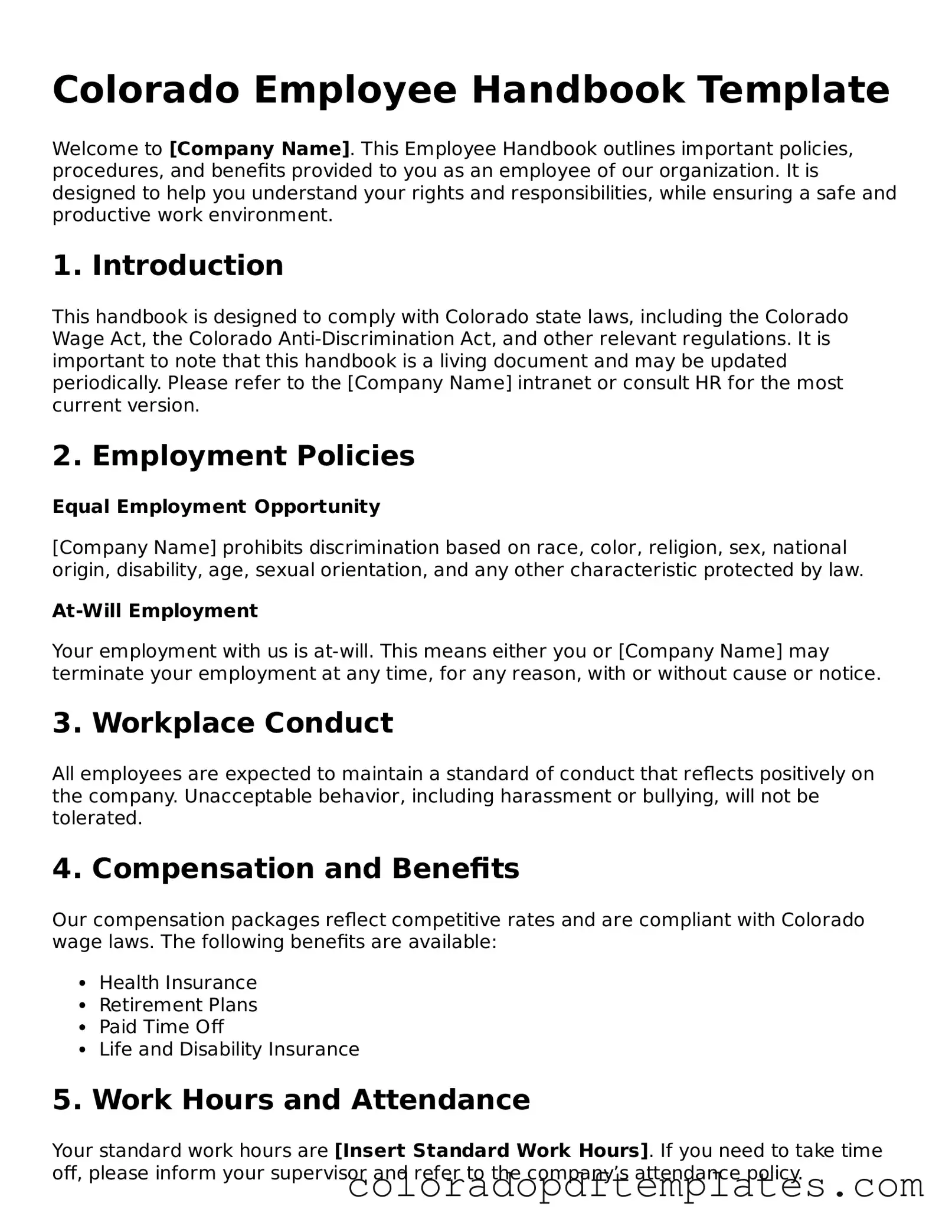The Colorado Employee Handbook form is a document designed to outline the policies, procedures, and expectations of an employer for their employees. It serves as a guide for employees to understand their rights, responsibilities, and the company culture. This handbook is essential for establishing clear communication between the employer and employees.
Why is it important to have an Employee Handbook?
An Employee Handbook is important for several reasons:
-
It helps to ensure compliance with state and federal laws.
-
It provides employees with a clear understanding of company policies, which can help prevent misunderstandings.
-
It serves as a reference for employees to consult when they have questions about their rights or the company’s expectations.
-
It can protect the employer by clearly stating policies and procedures, which can be helpful in legal disputes.
Who should receive a copy of the Employee Handbook?
All employees should receive a copy of the Employee Handbook, including full-time, part-time, and temporary staff. It is also a good practice to provide new hires with the handbook during their onboarding process. This ensures that everyone is aware of the company policies from the beginning of their employment.
How often should the Employee Handbook be updated?
The Employee Handbook should be reviewed and updated regularly, at least once a year. Changes in laws, company policies, or procedures may necessitate updates. Keeping the handbook current ensures that employees have access to the most relevant information regarding their employment.
What should be included in the Employee Handbook?
A comprehensive Employee Handbook typically includes the following sections:
-
Welcome message and company history
-
Employment policies (e.g., hiring, termination, and promotion)
-
Workplace conduct and behavior expectations
-
Compensation and benefits information
-
Leave policies (e.g., vacation, sick leave, and family leave)
-
Health and safety guidelines
-
Disciplinary procedures
-
Equal employment opportunity statement
How can employees provide feedback on the Employee Handbook?
Employees are encouraged to provide feedback on the Employee Handbook. This can be done through formal channels, such as employee surveys or suggestion boxes, or informally by speaking with a supervisor or human resources representative. Open communication helps ensure that the handbook meets the needs of all employees.
Is it necessary to have employees sign an acknowledgment of the Employee Handbook?
Yes, it is advisable to have employees sign an acknowledgment form indicating they have received and understood the Employee Handbook. This signature can serve as a record that employees are aware of the policies and procedures outlined in the handbook, which can be beneficial in case of disputes.
What should an employee do if they have questions about the Employee Handbook?
If an employee has questions about the Employee Handbook, they should reach out to their supervisor or the human resources department. It is important for employees to seek clarification on any policies or procedures they do not understand, as this promotes a better working environment and ensures compliance with company expectations.
